The conversion of the old Smithfield market buildings into the new London Museum reached a milestone when the final piece of a huge copper-clad roof was installed by a former apprentice who worked on the original building back in the 1960s.
The museum is taking over several buildings in Smithfield, and while the Victorian buildings are being converted first, the roof of the 1960s building next door also needed restoration work.
When built in the early 1960s, the concrete domed roof over the old poultry market was probably Europe’s largest single span of concrete. It’s less well known that when it was built, it was covered in copper cladding on the outside, and over the past 60 years, that had decayed to the point that it needed replacing.
So the old pale green stained copper cladding has been stripped back and replaced with a new, and for a while, brightly reflective copper coloured roof.
Kate Smith of Julian Harrap Architects explained that the old roof had suffered badly from problems that are less likely to affect the replacement roof.
Some of the changes are structural, and although invisible to the casual eye, the like-for-like replacement is subtly different to reduce the risk of leaks by changing the design and the angle of the copper sheets laid on the roof to improve drainage. They also used long sheet 22 gauge copper, which is the thickest that can be formed by hand, and using long sheets reduces the number of joints needed to create the roof.
Something else that the new roof won’t have to deal with is acid rain, which is less of a problem now than it was in the 1970s and 90s.
The roof is also better waterproofed and insulated, as underneath the new copper cladding, there are several layers of waterproofing membrane sandwiching a steel and bitumen cover — and 13cm of foam glass insulation.
The repairs were carried out by Full Metal Jacket, and it’s expected that the roof won’t need any significant work for at least another 60 years.
When they were stripping back the old copper sheeting, a coin and copy of the Daily Mirror from 1963 was found hidden under the copper — with a headline story about the unusual sight of a woman working on a building site. So, they’ve created a modern time capsule that sits right in the centre of the roof underneath the old weathervane.
Yesterday morning, the time capsule was placed underneath the weather vane, along with a copy of yesterday’s Times newspaper and a 2023 commemorative coin were placed alongside the Daily Mirror and 1963 coins, along with a photo of the builders who carried out the restoration.
To complete the final piece of the restoration, an apprentice who worked on the original roof in the 1960s was invited back, so Chris Johnson (83yrs) brought his bag of tools back to London to work on the roof once again.
The roof is a massive 70 metres by 40 metres in size, and while the concrete is steel reinforced, it’s only 76mm thick. That meant when on the roof, everyone was spread out and not standing in groups because that thin roof has a weight limit.
With the weather vane in the centre the focus of attention, and everyone spread out in a circle around, the effect for a while wasn’t unlike a pagan ceremony being enacted to celebrate the completion of the restoration.
And in the centre, Chris took up his old tools again and carefully curled the copper plate over the edges around the time capsule and then going around several times, tapped the copper into a tight clean seal that’ll protect the contents for decades to come.
Sharon Ament, Director, Museum of London, said: “As we draw towards the end of the year, it’s fantastic to mark another key moment in the transformation of these remarkable buildings, and celebrate the amazing skill and craftsmanship involved their restoration. It’s a truly unique project that will pay homage to the heritage and history of these buildings whilst creating a world-class, sustainable and contemporary new museum for London.”
Although it is already starting to take on its blue-green patina, it’ll take 30 years for the bright copper to fade away entirely. However, if you can glimpse it from the streets around Smithfield, it’s glowing brightly in the morning sun.
The City of London Corporation funded the restoration of the copper roof.

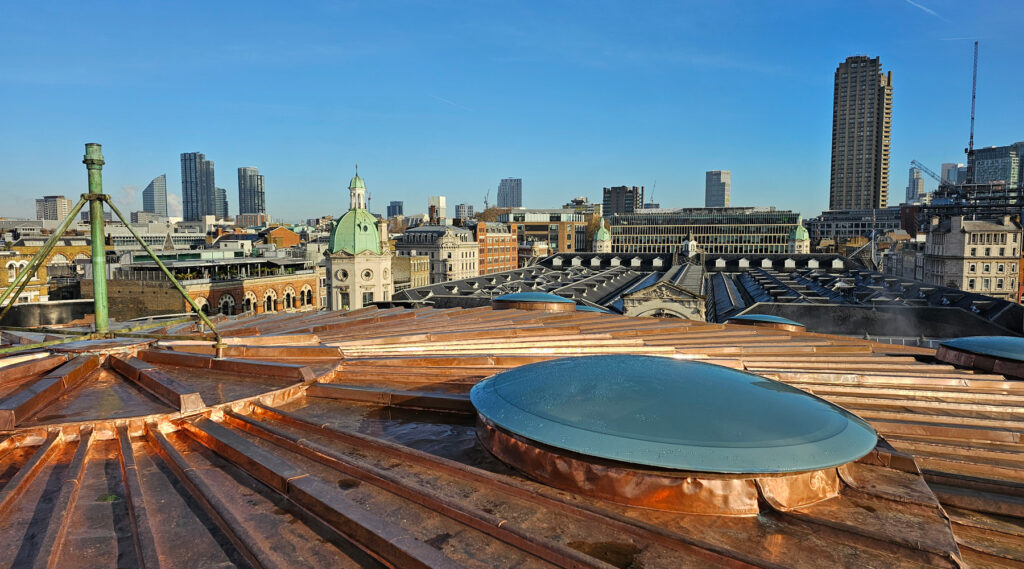
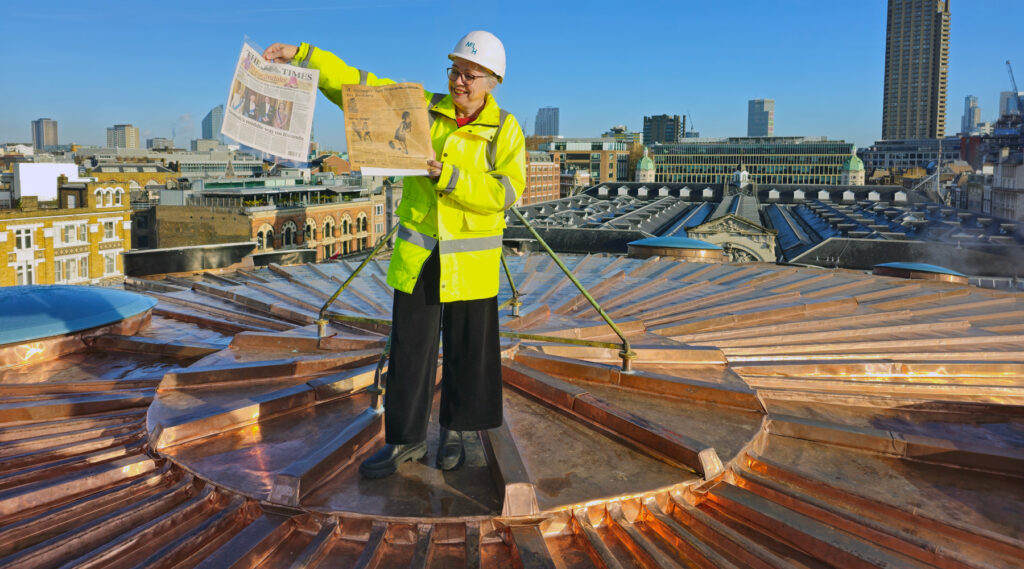
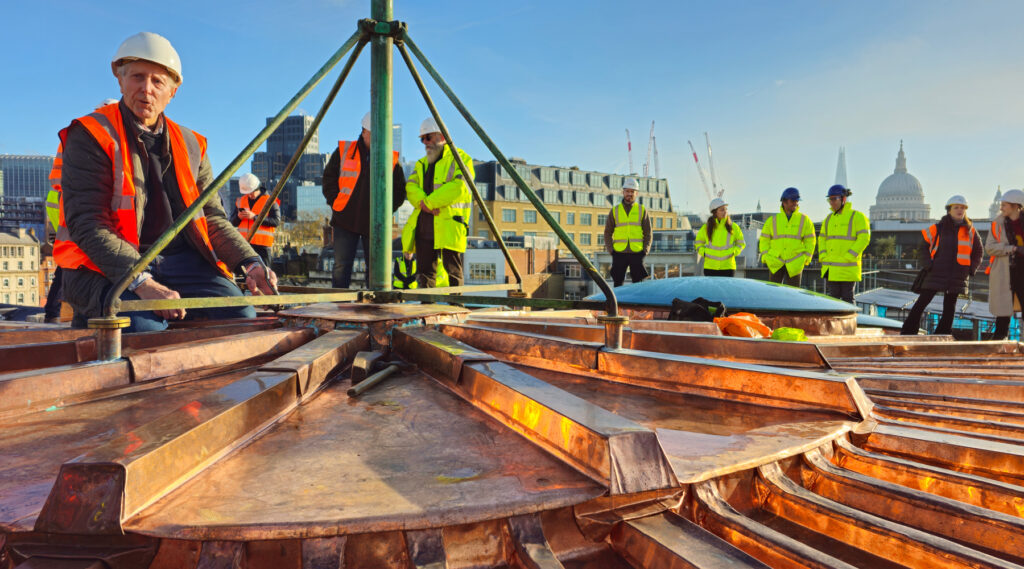
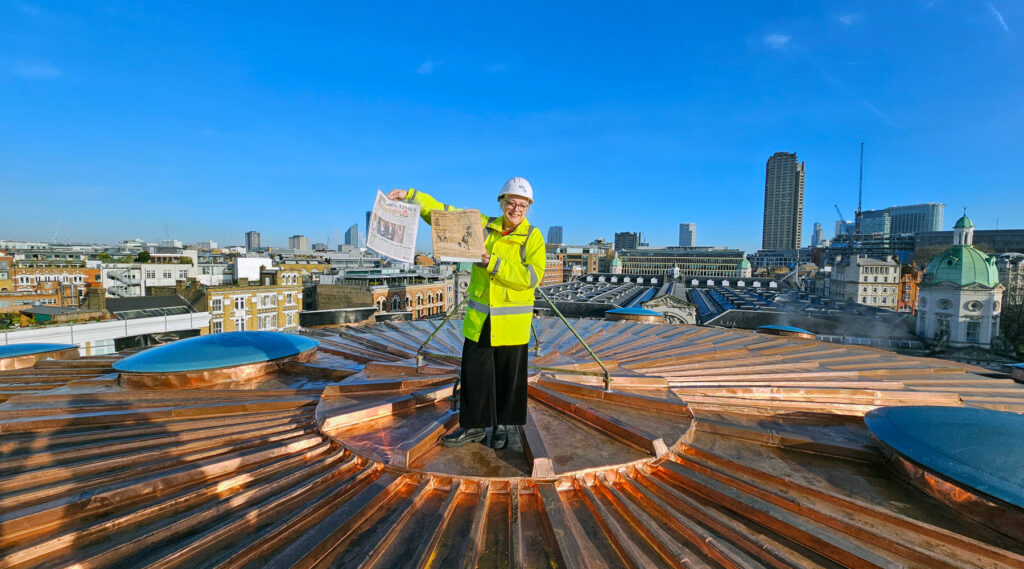
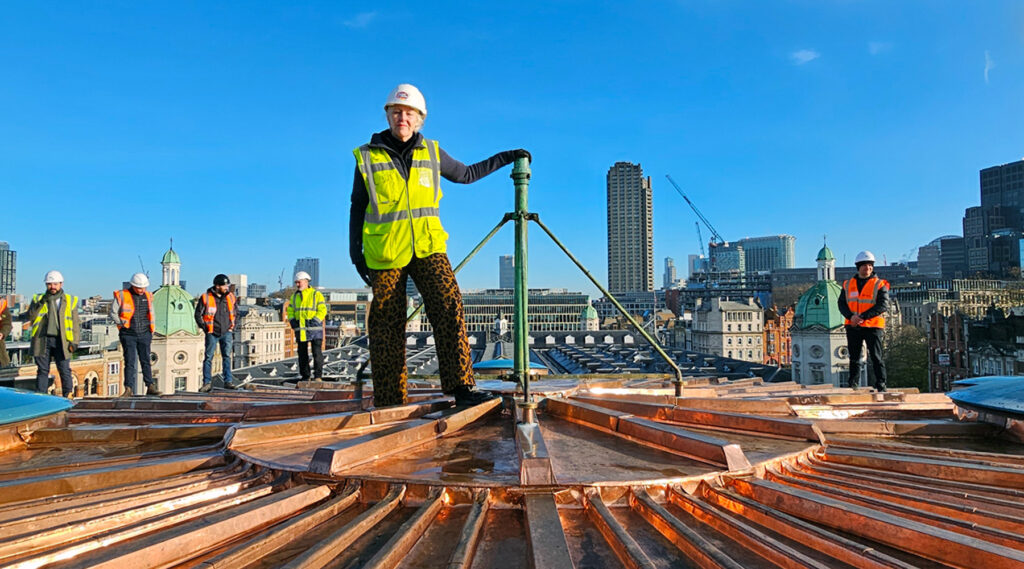
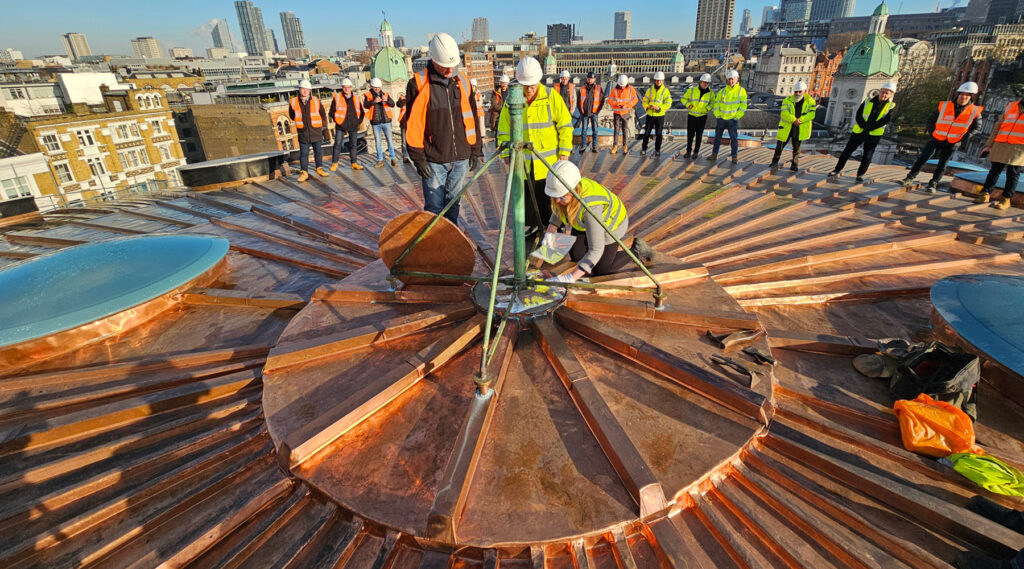
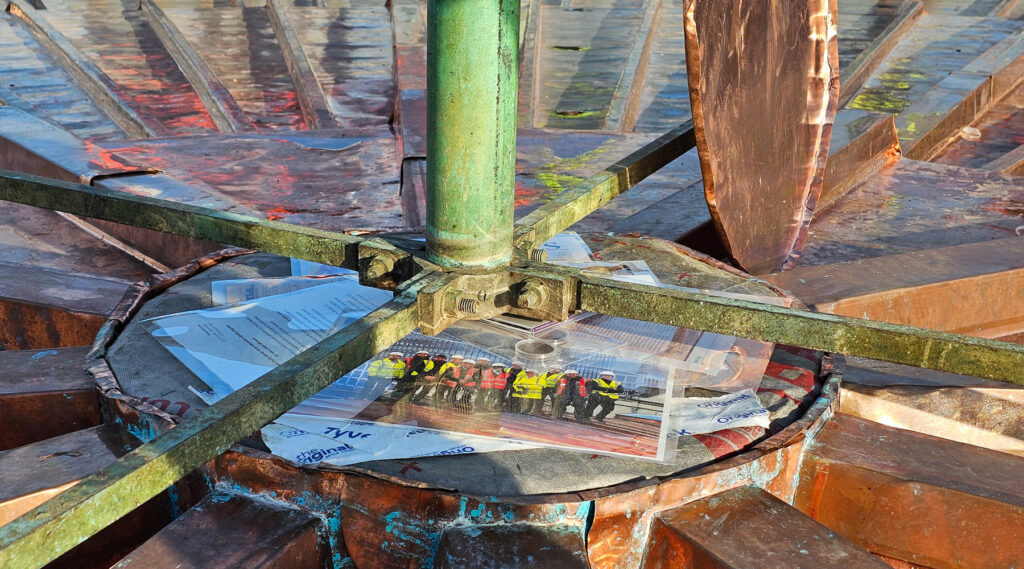
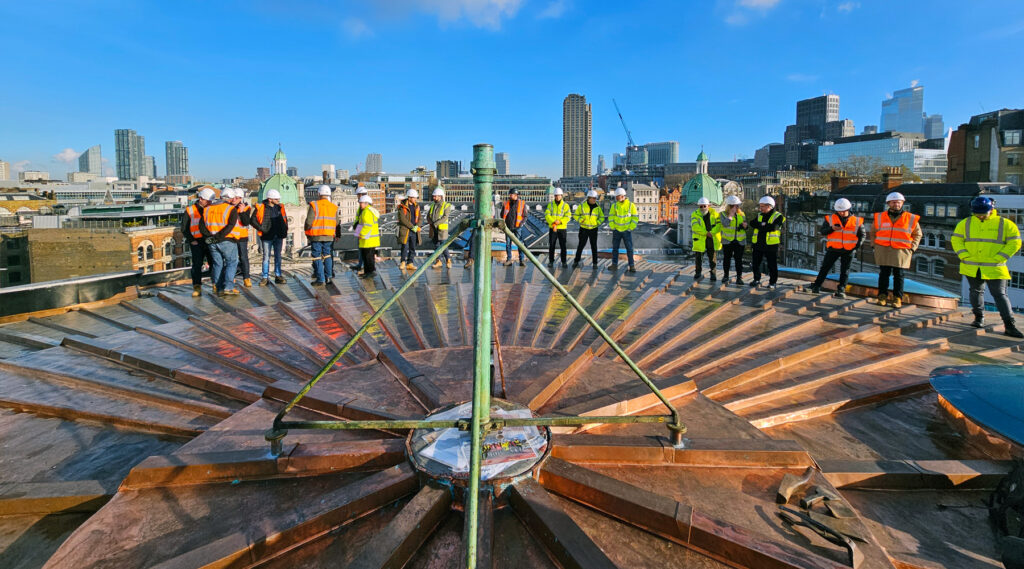
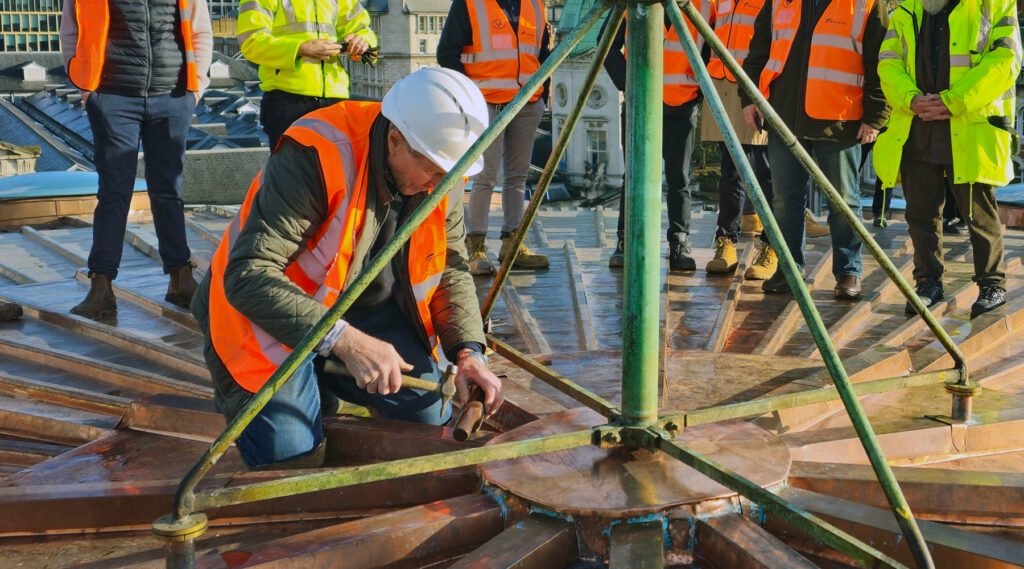
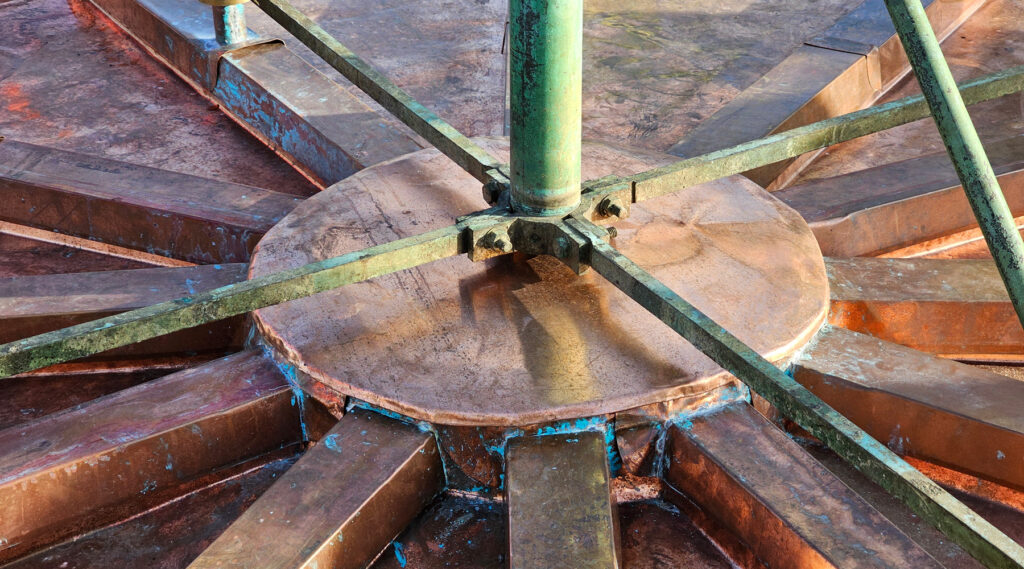
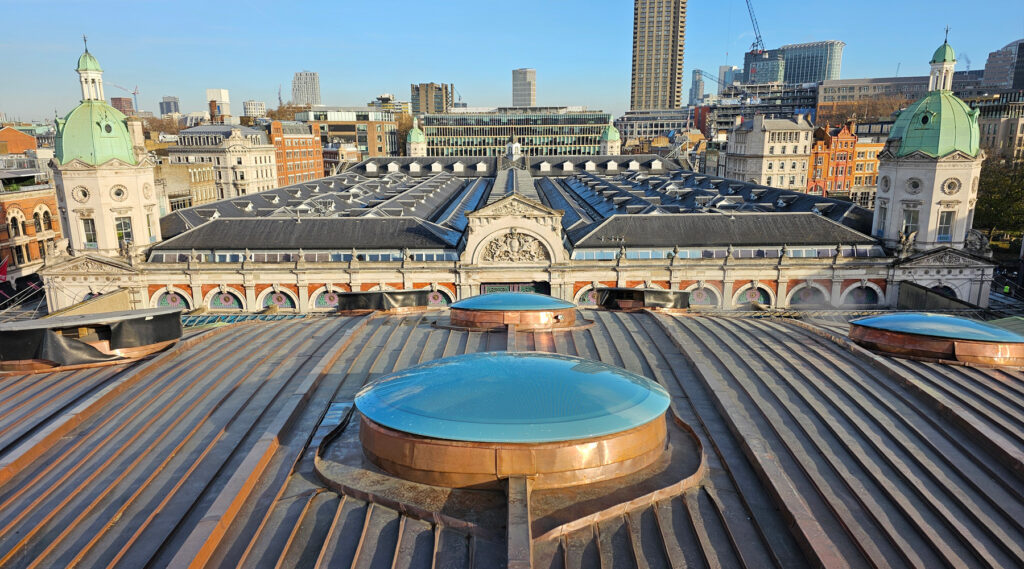






Leave a Reply